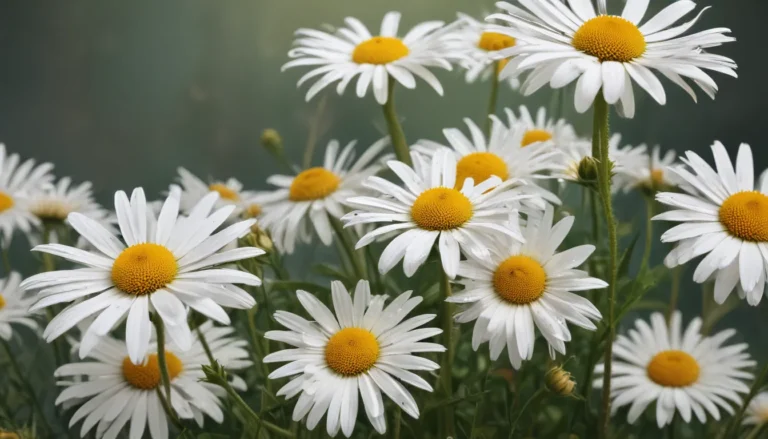The pictures we use in our articles might not show exactly what the words say. We choose these pictures to make you interested in reading more. The pictures work together with the words but don’t take their place. The words still tell you the important facts.
Are you ready to embark on a journey of discovery into the enchanting world of Elaeagnus? Get ready to be amazed by the versatility, beauty, and resilience of this remarkable plant genus. From its ability to fix nitrogen in the soil to its medicinal properties and cultural significance, Elaeagnus has captured the hearts of botanists, gardeners, and nature enthusiasts around the globe. Join us as we delve into 17 extraordinary facts about Elaeagnus that will spark your curiosity and unveil the hidden wonders of this botanical wonder.
The Versatility of Elaeagnus
Elaeagnus is not your average plant – it's a diverse and adaptable genus that encompasses around 90 different species. From shrubs to small trees, Elaeagnus comes in various forms, each with its unique charm and characteristics.
A Nitrogen-Fixing Wonder
One of the most fascinating aspects of Elaeagnus is its ability to form a symbiotic relationship with nitrogen-fixing bacteria. This unique trait allows the plant to convert atmospheric nitrogen into a usable form, enhancing soil fertility and promoting healthy growth.
The Sweet Rewards of Edible Fruits
Many species of Elaeagnus produce fruits that are not only visually appealing but also delicious. These sweet and tangy fruits are a popular choice for jams, jellies, and baked goods, adding a flavorful twist to your culinary creations.
Fragrant Flowers That Delight the Senses
Step into a world of enchanting scents with the fragrant flowers of Elaeagnus. These delicate blooms emit a pleasant aroma that attracts bees, butterflies, and other pollinators, creating a buzzing hub of activity in your garden.
The Resilience of Drought-Tolerant Elaeagnus
In a world where water is precious, Elaeagnus shines as a beacon of resilience. Its ability to store water in leaves and branches allows it to thrive in dry conditions, making it a sustainable choice for landscaping in arid regions.
A Guardian Against Erosion
Say goodbye to soil erosion woes with Elaeagnus by your side. Thanks to its robust root system, this plant is a natural choice for soil stabilization and erosion control projects, protecting your landscape from the ravages of nature.
Shimmering Silver Leaves That Stand Out
Add a touch of elegance to your garden with the silver foliage of Elaeagnus. Covered in tiny silver scales, the leaves create a shimmering effect that catches the light and adds a unique aesthetic appeal to your outdoor space.
Healing Powers of Medicinal Elaeagnus
Discover the ancient healing secrets of Elaeagnus, as certain species are used in traditional medicine for their antioxidant, anti-inflammatory, and antimicrobial properties. From improving digestion to boosting the immune system, these plants offer a natural remedy for wellness.
A Haven for Pollinators
Create a haven for bees, butterflies, and other pollinators with Elaeagnus in your garden. The fragrant flowers act as a magnet for these beneficial insects, supporting the pollination of other plants and fostering biodiversity in your outdoor oasis.
Providing Shelter as a Windbreak
Embrace the protective embrace of Elaeagnus as a windbreak or hedging plant. Its dense foliage and strong growth habit provide an effective shield against strong winds, creating a sheltered environment for your garden to thrive.
Nutrient-Rich Edible Oil for Health
Unlock the nutritional benefits of Elaeagnus with its edible oil extracted from the seeds. Packed with essential fatty acids and antioxidants, this oil offers a healthy choice for cooking or as a dietary supplement to nourish your body and mind.
Adaptable to All Soils
No soil is too challenging for Elaeagnus to conquer. From sandy to loamy soils, this plant thrives in various conditions, making it a versatile choice for landscaping and reclamation projects that demand adaptability.
Harnessing the Wisdom of Traditional Chinese Medicine
Journey into the realm of traditional Chinese medicine with Elaeagnus, revered for its positive effects on blood circulation, digestion, and overall well-being. Unlock the ancient wisdom of these plants and embrace their healing energies.
Nourishing Wildlife with Fruitful Delights
Share the bounty of Elaeagnus with wildlife as the fruits become a nutritious feast for birds and small mammals. By dispersing the plant's seeds, these creatures play a vital role in spreading the magic of Elaeagnus across the natural landscape.
Ornamental Elegance for Landscaping
Elevate your landscape with the ornamental beauty of Elaeagnus. Its attractive foliage, fragrant flowers, and versatile nature make it a popular choice for gardens, parks, and residential landscapes, adding a touch of elegance to any outdoor setting.
Restoring Coastal Ecosystems with Elaeagnus
Witness the transformative power of Elaeagnus in coastal restoration projects. With its tolerance to salt spray and coastal conditions, this plant helps stabilize dunes and restore coastal ecosystems, breathing new life into barren landscapes.
Embracing Historical and Cultural Significance
Step into a world of symbolism and tradition with Elaeagnus, celebrated for its historical and cultural significance. From traditional ceremonies to culinary traditions, these plants hold a special place in cultural heritage, weaving stories of the past into the tapestry of the present.
As you explore the mesmerizing world of Elaeagnus, you'll uncover a treasure trove of wonders that captivate the mind and soul. From its ecological contributions to its healing properties and aesthetic appeal, Elaeagnus stands as a testament to the beauty and resilience of the natural world.
Conclusion: Embrace the Magic of Elaeagnus
In conclusion, Elaeagnus is a plant like no other, with a multitude of extraordinary qualities and benefits that make it a cherished member of the botanical world. Whether you're drawn to its ability to fix nitrogen in the soil or intrigued by its medicinal properties, there's no denying the allure of Elaeagnus. So, next time you encounter this phenomenal plant, take a moment to appreciate its remarkable features and the wonders it brings to the natural realm.
FAQs: Unveiling the Mysteries of Elaeagnus
-
What is Elaeagnus?
Elaeagnus is a plant genus belonging to the family Elaeagnaceae, comprising deciduous or evergreen shrubs and small trees. -
Where is Elaeagnus commonly found?
Elaeagnus is native to Asia, Europe, and North America, thriving in various habitats such as forests, coastal areas, and dry or sandy soils. -
Are all Elaeagnus species edible?
No, not all Elaeagnus species are edible. While some produce edible fruits, others may have fruits that are not suitable for consumption. -
What are the medicinal benefits of Elaeagnus?
Elaeagnus is valued in traditional medicine for its antimicrobial, anti-inflammatory, and antioxidant properties, promoting overall health and well-being. -
Can Elaeagnus be grown in gardens?
Yes, Elaeagnus is a versatile plant suitable for garden cultivation due to its adaptability to different soil types and environmental conditions. -
Can Elaeagnus fix nitrogen in the soil?
Yes, Elaeagnus has the unique ability to fix nitrogen in the soil through a symbiotic relationship with nitrogen-fixing bacteria, improving soil fertility. -
How do you propagate Elaeagnus?
Elaeagnus can be propagated from seeds collected from fruits or cuttings taken from established plants and rooted in a well-draining soil mix. -
Are Elaeagnus plants resistant to pests and diseases?
Elaeagnus plants are generally resistant to pests and diseases, although they may occasionally be affected by common garden pests such as aphids. -
How tall do Elaeagnus plants grow?
The height of Elaeagnus plants varies depending on the species and growing conditions, ranging from small shrubs to large trees. -
What is the best time to prune Elaeagnus?
Late winter or early spring is the ideal time to prune Elaeagnus before new growth begins, promoting healthy growth and maintaining plant vigor.
Embark on a journey of discovery with Elaeagnus and unlock the secrets of this extraordinary plant genus. With its myriad of benefits and enchanting qualities, Elaeagnus invites you to explore the wonders of the natural world and embrace the magic of gardening and landscaping.






